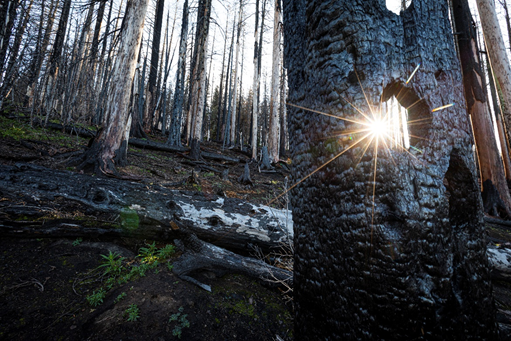Forest Fires in Western Cascadia
Drivers, characteristics & indicators of postfire resilience
Location
Online
Forest Fires in Western Cascadia – Online Event
Date & Time
November 17, 2021, 12:00 pm – 1:00 pm
Description
The Department of Geography & Environmental Systems cordially invites you to join us for our Virtual Seminar Series on Wednesday, November 17th at Noon ET.
Forest fires in western Cascadia: Drivers, characteristics, and indicators of post-fire resilience
Dr. Brian Harvey
Department of Environmental and Forest Sciences
University of Washington
Understanding the mechanisms that underpin forest resilience to fires is of high importance as the climate warms and fire activity increases worldwide. This knowledge gap is particularly wide in forests characterized by infrequent and severe fires, since opportunities to study fire events are inherently rare. In a series of associated projects, we characterize factors associated with, and indicators of forest resilience to fire west of the Cascade Crest in Washington and northern Oregon, USA (‘western Cascadia’). Using satellite burn severity mapping and landscape ecological analyses, we characterize patterns and drivers of stand-replacing fire from 1984 to 2020, building an understanding of the spatial signature of the western Cascadia fire regime. In a network of intensively measured permanent field plots distributed across forests burned between 2015 and 2020, we measure how pre-fire forest structure, burn severity, and topoclimate relate to several key post-fire indicators of resilience. Specifically, data on post-fire tree regeneration, early-seral vegetation communities, woody carbon, and fuel profiles are critical early indicators of resilience and potential long-term post-fire trajectories. Collectively, findings provide valuable insights into the role that fire plays in shaping western Cascadia, and provide the foundation for understanding resilience to fire now and in the future.
Brian J. Harvey is the Jack Corkery and George Corkery Jr. Endowed Professor in Forest Sciences and Assistant Professor in the School of Environmental and Forest at the University of Washington. His research focuses on understanding the nature of forest disturbances (e.g., fires and insect outbreaks) – and how forest structure and function is shaped by disturbances, interactions among disturbances, and climate. His work spans field studies to large spatial datasets and analyses, drawing on insights from landscape ecology and community ecology. His research focus is on disturbance ecology of forests in coastal California, the US Rocky Mountains, and Pacific Northwest.

Tags:
